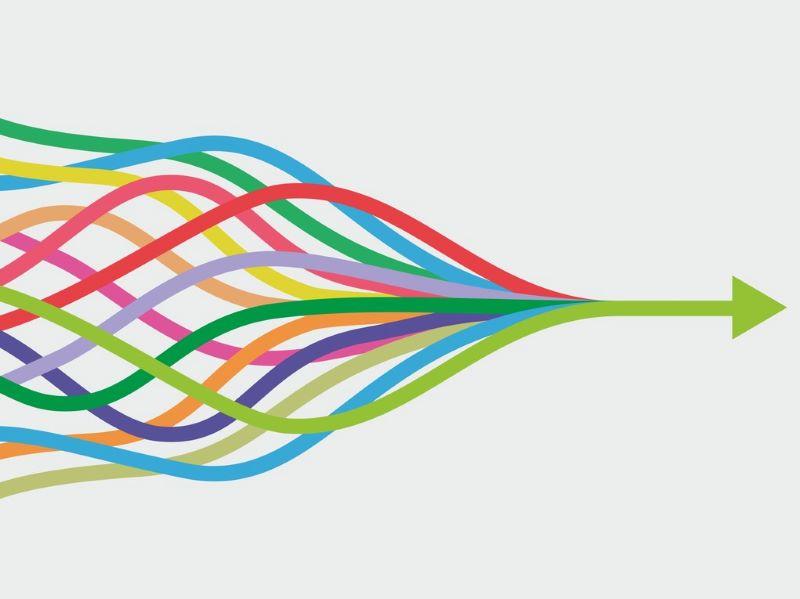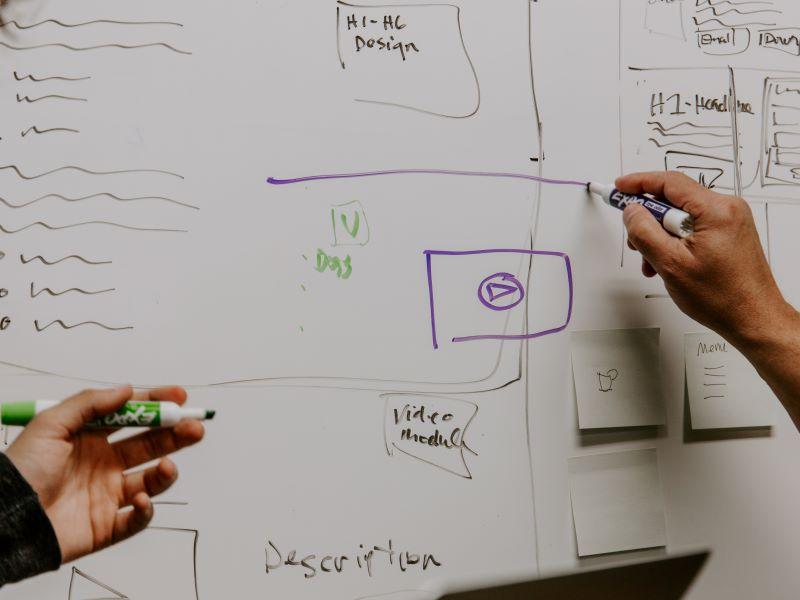Hello, welcome back. So just to link us back to the first part, we can see here the signature pedagogy approach. We brainstorm the habits of heart, habits of head, habits of hand that we feel are the essence of the graduate of our programme.
This has been done, remember, by our team of industry experts, also by our team of academics and by, you know, alumni and students who are involved in that process. We now have a brainstorm of loads of ideas of what could be in here.
There’s a process of winnowing and looking for overlap and building something consistent from it.
So thematic analysis essentially goes on here, and we then have some key themes. You can see here the key themes of a particular programme.
Now in one sense it doesn’t matter what these are, but I think it’s interesting to note that they may not be the key themes that a typical engineering degree would necessarily have. Things like making connections, reflection and lifelong learning, recognised interplay of theory and practice are maybe not very overtly stated by a lot of programmes.
These themes really inform how we teach, not so much what we teach. A little bit about of what we teach, but mostly how we teach. So, we teach by experimentation, we give complex problems that require students to make connections between different areas. We require students to communicate and visualise their ideas. So, this is really how we teach all of our content.
So, it really informs the “how”, the pedagogy of our approach. And by understanding what the key themes are, everybody can support that pedagogy. We don’t use all the elements of that pedagogy in every single module, but you do have that overarching understanding of the kind of ways these students need to be learning and addressing the content.
When we have those things, we can start to then build up some learning outcomes. What are the outcomes for our process? What are the outcomes for this course? This programme?
What you’ll notice here is a blend of academic terminology. So we’re trying to be academically robust here. We’re trying to use Bloom’s taxonomy to make sure that we have the learning outcomes, the right levels for various parts of the programme.
But we’re also trying to keep it in a language that’s going to mean something to students, and mean something to industry, so that they understand what it is they’re dealing with here.
So, without going into detail, you can see there’s a blend of those two things.
Once we have those learning outcomes, we can decompose those down to module-level learning outcomes and then to think about where students need to be by the end of year one, or the end of year two.
And what we then build is we build ourselves a learning journey. So the students arrive at induction and they graduate as fully fledged engineers. And in between that, we have modules delivering elements of all of those overarching learning outcomes. So some modules deliver lots of elements of learning outcomes; other modules are very focused on one or two learning outcomes. We can see that those learning outcomes are delivered through a number of different modules.
So students can see how modules relate to each other, they can understand how their knowledge is building over the course of the years, they can see how each module fits together, and they can understand it as a whole.
So, the whole point of this is to develop a clear map of the journey for the students to follow, and the staff understand the map as well. So, if a student gets confused or lost, we can take it back to this and explain to them where they are, how they’re going and what’s coming next.
We take this approach to the next level, so we do a map of the learning journey for each module as well. So we have, you know, a consistent approach to all of this stuff.
I’ll try to quickly sum up what we think we’ve learned from this process.
The first thing is, it’s all about collaboration. We need to create a collaborative environment where staff, students and industry can work together. If that doesn’t happen, it won’t work.
Starting with the “why” helped us avoid content overload. We know why we are teaching every single thing on that course. There is nothing which has just turned up because it’s a pet love of one particular tutor or another.
We found the signature pedagogy provided additional insights. We saw things like connectivity, making connections, reflection that hadn’t come out in previous design processes. And probably wouldn't have come out in those processes.
Building down from the course level to module level avoids those overlapping gaps. Getting the tutors bought into the overall programme helps us to convince them, to make sure they are fitting that programme. So there are much more committed tutors there. They’re clear how they fit in. They’re clear what their module delivers for other modules and what modules, you know, theirs are built upon.
Students tend to be, we’re seeing, are more engaged with the learning because they can see the point; they can see where they’re at, they can see where they’re going, they have that “why”.
And we’ve also managed to use our assessment but make that assessment more meaningful to students.
So I guess the critical message here is always start with the “why”.
Understand why you’re creating a programme and then use signature pedagogies, learning journeys and learning maps to develop a way in which your students can become the people they need to be, to transform the world in the way they need to transform it. Thank you very much.
Graeme Knowles is a reader and head of education innovation in the Warwick Manufacturing Group (WMG) at the University of Warwick.
Watch the first part of Graeme’s guide to curriculum development: Start with why, part one: taking a new approach to curriculum development.
If you found this interesting and want advice and insight from academics and university staff delivered directly to your inbox each week, sign up for the THE Campus newsletter.




comment